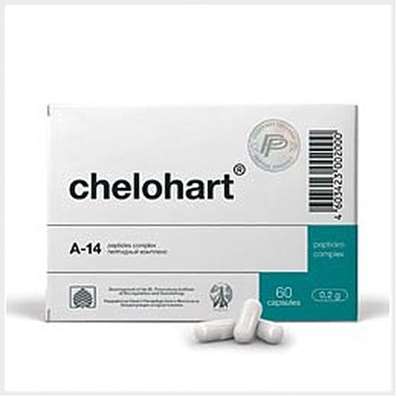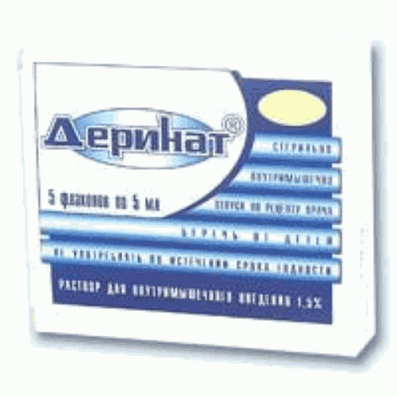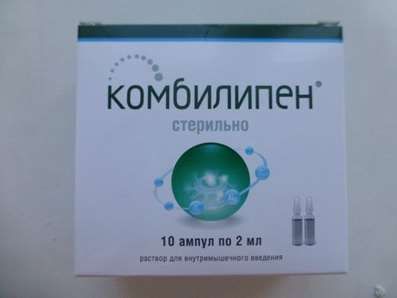Instruction for use: Visken
I want this, give me price
Trade name of the drug – Visken
Dosage Form: tablets
Active substance:Pindololum
ATX
C07AA03 Pindolol
Pharmacotherapeutic group: Beta-blockers
The nosological classification (ICD-10)
I10 Essential (primary) hypertension: hypertension; Arterial hypertension; Arterial hypertension crisis course; Essential Hypertension; Essential hypertension; Essential hypertension; Essential hypertension; Essential hypertension; Primary hypertension; Arterial hypertension, complications of diabetes; The sudden increase in blood pressure; Hypertensive disorders of blood circulation; hypertensive condition; hypertensive crises; arterial Hypertension; malignant Hypertension; Hypertonic disease; hypertensive crises; accelerated hypertension; malignant hypertension; The aggravation of hypertensive disease; Transient hypertension; Isolated systolic hypertension
I15 Secondary hypertension: Arterial hypertension, complications of diabetes; hypertension; The sudden increase in blood pressure; Hypertensive disorders of blood circulation; hypertensive condition; hypertensive crises; hypertension; arterial Hypertension; malignant Hypertension; hypertensive crises; accelerated hypertension; malignant hypertension; The aggravation of hypertensive disease; Transient hypertension; hypertension; Arterial hypertension; Arterial hypertension crisis course; renovascular hypertension; Hypertension symptomatic; Renal hypertension; Renovascular hypertension; renovascular hypertension; Symptomatic hypertension
I20 Angina [angina]: Heberden disease; Angina pectoris; The attack of angina pectoris; recurrent angina; Spontaneous angina; Stable angina pectoris; Angina rest; Angina progressing; Angina mixed; Angina spontaneous; stable angina; Chronic stable angina; Angina Syndrome X
I47.1 Supraventricular tachycardia: Supraventricular paroxysmal tachycardia; supraventricular tachyarrhythmia; supraventricular tachycardia; Supraventricular arrhythmias; Supraventricular paroxysmal tachycardia; supraventricular tachyarrhythmias; supraventricular tachycardia; Neurogenic sinus tachycardia; orthodromic tachycardia; Paroxysmal supraventricular tachycardia; Paroxysm of supraventricular tachycardia; Paroxysm of supraventricular tachycardia with WPW-syndrome; Paroxysm of atrial tachycardia; Paroxysmal supraventricular tachyarrhythmia; Paroxysmal supraventricular tachycardia; Politopnye atrial tachycardia; Atrial fibrillation; Atrial tachycardia is true; Atrial tachycardia; Atrial tachycardia with AV block; reperfusion arrhythmias; Reflex Bertsolda-Jarisch; Recurrent sustained supraventricular paroxysmal tachycardia; Symptomatic ventricular tachycardia; Sinus tachycardia; Supraventricular paroxysmal tachycardia; supraventricular tachyarrhythmia; supraventricular tachycardia; supraventricular arrhythmia; supraventricular arrhythmias; Tachycardia of AV connections; supraventricular tachycardia; Tachycardia orthodromic; sinus tachycardia; The nodal tachycardia; Chaotic atrial tachycardia politopnye; Wolff-Parkinson-White
I47.9 Paroxysmal tachycardia, unspecified: Paroxysm of ventricular tachycardia; Paroxysmal dysrhythmia; Paroxysmal ventricular fibrillation; Paroxysm sinus tachycardia; Paroxysmal ventricular tachycardia torsades; Paroxysmal atrial fibrillation and flutter
I48 Atrial fibrillation and flutter: Permanent atrial tachyarrhythmias; Relief frequent ventricular rate during atrial flutter or blink; atrial fibrillation; Paroxysm of atrial fibrillation and flutter; Paroxysm of atrial fibrillation; Paroxysmal atrial fibrillation; Atrial premature beats; Tahiaritmicheskoy atrial fibrillation; Tahisistolicheskoy atrial fibrillation; auricular flutter; Life-threatening ventricular fibrillation; Atrial fibrillation; Chronic atrial fibrillation; supraventricular arrhythmia; Paroxysmal atrial fibrillation and flutter; Paroxysmal fibrilloflutter; Atrial premature beats
I49.1 Premature atrial depolarization: supraventricular arrhythmia; supraventricular arrhythmia; supraventricular arrhythmias; supraventricular arrhythmias; supraventricular arrhythmias; supraventricular beats; atrial premature beats
I49.3 Premature ventricular depolarization: Asynergia left ventricle; ventricular Arrhythmia; Pronounced PVCs; fibrillation; ventricular beat; ventricular beat; Ventricular arrhythmias; ventricular beat; Paroxysmal ventricular arrythmia; Recurrent ventricular arrhythmias; ventricular premature beats; Asynergia ventricular
I49.8 Other specified cardiac arrhythmias: atrial fibrillation; Arrhythmia Paroxysmal atrial; Atrial arrhythmia tachysystolic; sinus arrhythmia; Asynergia ventricular; Asynergia left ventricle; Corrigan's pulse; atrial fibrillation; atrial tachyarrhythmia; The migration of supraventricular pacemaker; Orthostatic changes in pulse; Disclaimer sinoatrial node; The paradoxical pulse; Paroxysm of atrial fibrillation; Paroxysmal atrial fibrillation; Paroxysmal dysrhythmia; Paroxysmal atrial-ventricular rhythm; Romano-Ward syndrome; trigemini; bigeminy
I51.8 Other ill-defined heart diseases
T46.0 Poisoning by cardiac glycosides and drugs of similar action: Arrhythmia on the background of digitalis intoxication; digitalis intoxication; Intoxication with cardiac glycosides; digitalis arrhythmia; Intoxication with cardiac glycosides and diuretics; intoxication; Digitalis poisoning drugs; Overdose or poisoning of digitalis glycosides
Composition (per tablet):
5 mg of pindolol
Excipients: magnesium stearate; povidone; talc; MCC; mannitol
in blister 10 pcs .; in a cardboard box 3 blisters.
Description
Round tablet white or grayish white color, with two flat sides, one has engraved - «VISKEN».
Pharmacological Properties of Visken
Pharmachologic effect - antianginal, antihypertensive, anti-arrhythmic.
Beta-adrenoceptor blocking. It has intrinsic sympathomimetic activity (reduced risk of developing heart failure, bronchospasm and peripheral circulatory disorders). Few changes in heart rate at rest, slows heart rate during physical and emotional stress.
Pharmacokinetics
Completely absorbed from the gastrointestinal tract, is metabolized at a "first pass" through the liver, biotransformiroetsa equally by the liver and kidneys. Binding to plasma proteins - 40-60%. It passes through the placental barrier. T1 / 2 - 3-4. H T1 / 2 can be longer in elderly patients and in patients with impaired liver and / or kidneys.
Indications of Visken
Arterial hypertension (mono or combination therapy), exertional angina (seizure prevention), supraventricular arrhythmias (sinus tachycardia, paroxysmal tachycardia, atrial fibrillation, supraventricular and ventricular premature beats, beats caused by load or digitalis), hyperkinetic cardiac syndrome.
Contraindications
Hypersensitivity, chronic heart failure IIB-III stage, refractory to treatment with cardiac glycosides, pulmonary heart, sinoatrial block, hypotension, metabolic acidosis, bradycardia, sick sinus syndrome, AV block II-III degree, asthma, projected surgical intervention using ether or chloroform anesthesia, children's age.
Pregnancy and breast-feeding
Precautions during pregnancy. Pindolol is excreted in breast milk, so when using the drug while breastfeeding also requires caution.
Side effect
From the nervous system and sensory organs: dizziness, headache, fatigue, sleep disturbance, rarely - depression, hallucinations.
Cardio-vascular system and blood (blood, hemostasis): rarely - orthostatic hypotension, bradycardia, heart failure, cold extremities (peripheral vascular spasms).
Other: nausea, skin rash, bronchospasm, muscle weakness, itching, impotence.
Interaction
In combination with calcium channel blockers such as verapamil - likely to cause bradycardia and hypotension, with sympathomimetics, tricyclic antidepressants, MAO inhibitors - mutual weakening effects with sympatholytic, peripheral vasodilators - increased antihypertensive effect, with NSAIDs - may reduce the antihypertensive effect of whiskey; cimetidine - pindolol is possible to increase the concentration in plasma. Enhances hypoglycemic action of oral antidiabetic agents and insulin.
Dosage and Administration
Inside.
The dose should be titrated for each patient individually.
Arterial hypertension. The recommended initial daily dose for adults - 5 mg 2 times a day. The usual maintenance dose is 10-30 mg / day in 2-3 divided doses. The daily dose should be increased gradually at weekly intervals to achieve the desired antihypertensive effect. The maximum daily dose - 30 mg. The effect of the drug can be observed with the 1 st week of its application, however, a pronounced therapeutic effect develops after 3-4 weeks of treatment.
Angina. 5-20 mg / day in 2-3 divided doses.
Cardiac arrhythmias. 15-30 mg / day in 2-3 divided doses.
Hyperkinetic cardiac syndrome. 5-20 mg / day in 2-3 divided doses.
Elderly patients. Elderly patients can be given the usual dose.
Children. Data on the use of the drug in children Visken® not.
Violation of the liver and kidneys. In mild or moderate hepatic impairment or renal function dose adjustment is required. However, in patients with severe liver dysfunction may be necessary to reduce the dose, and the drug is contraindicated in severe renal insufficiency.
Overdose
Symptoms: bronchospasm, hypotension and bradycardia.
Treatment: with severe bronchospasm - the introduction of aminophylline (intravenously)) or beta-adrenergic stimulants, including isoprenaline (intravenously) or slow inhalation); bradycardia or severe hypotension - 0.5-1 mg atropine (intravenously)).
Precautionary measures
Be wary appoint diabetes, and in the event of a prolonged diet (to reduce the risk of hypoglycaemia). In appointing the patients with diabetes mellitus antidiabetic agents and insulin their dose should be adjusted. In heart failure treatment is carried out only in combination with traditional therapy under the control of hemodynamic parameters. Treatment of the patient with bronchial spasm begin cautiously, with small doses (in case of shortness of breath taking the drug immediately stop). Cancel preparation with a gradual reduction in dose (in order to avoid deterioration of the patient's condition, especially in IHD). Before surgery phasing out should be completed 48 hours before the operation. Continuous monitoring of hemodynamic parameters in the case of general anesthesia. Patients with pheochromocytoma are administered in combination with an alpha-blocker. During treatment Viskenom may worsen existing violations of the peripheral circulation. At heart, kidney and liver failure should regularly monitor the level of potassium in the blood plasma. Early treatment may experience dizziness and fatigue, which may affect the ability to drive vehicles and use of technical equipment requiring attention.
Conditions of supply of pharmacies
On prescription.
Storage conditions of Visken
At a temperature of 15-25 ° C.
Keep out of the reach of children.
Shelf life
5 years.
Do not use beyond the expiration date printed on the package.

 Cart
Cart





